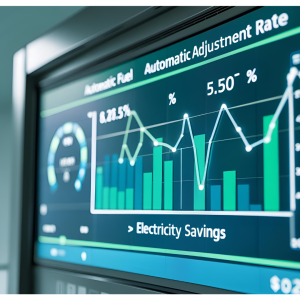Understanding Malaysia’s ICPT vs AFA Mechanisms: What Residential Users Need to Know
Electricity tariff regulation in Malaysia is undergoing a significant transformation. Since 2014, the Imbalance Cost Pass-Through (ICPT) mechanism has been used to adjust electricity tariffs based on fluctuations in fuel and generation-related costs. However, beginning in July 2025, Malaysia will introduce a new method called the Auto Fuel Adjustment (AFA) mechanism. This new pricing system is intended to offer a more dynamic, market-reflective, and automated approach to managing electricity prices. For residential users, this change marks an important shift that may affect how much they pay for electricity on a monthly basis.

The ICPT mechanism operates under Malaysia’s Incentive-Based Regulation (IBR) framework. It allows electricity tariffs to be reviewed and adjusted every six months to reflect actual changes in fuel prices, such as coal and natural gas. If fuel prices drop, consumers may receive a rebate, while increases in fuel prices may result in a surcharge. These adjustments are approved by the Energy Commission and implemented by Tenaga Nasional Berhad (TNB), the main electricity provider in Peninsular Malaysia. For residential users, particularly those consuming less than 300 kilowatt-hours (kWh) per month, the government has traditionally provided subsidies that either reduce the surcharge or completely exempt them from it. This has helped protect low-income households from the direct impact of rising global fuel prices.
In contrast, the upcoming Auto Fuel Adjustment mechanism represents a shift toward a more frequent and automated pricing system. Unlike ICPT, which is manually reviewed and adjusted twice a year, AFA will adjust electricity tariffs on a monthly basis. These monthly changes will be automatically calculated based on real-time fuel cost data, allowing tariffs to reflect market trends more accurately and quickly. The goal of AFA is to improve transparency, efficiency, and sustainability in the electricity pricing system. By aligning prices more closely with actual fuel costs, AFA encourages more responsible energy consumption and reduces the need for large government subsidies.
|
Feature |
ICPT | AFA |
|
Review Frequency |
Every 6 months | Every month |
|
Adjustment Type |
Manual, regulated |
Automatic, market-driven |
|
Price Transparency |
Moderate |
High |
| Implementation | Since 2014 |
From July 2025 onward |
| Residential Impact | Rebate/Surcharge with subsidy protection |
Fluctuating monthly tariffs, less stable subsidies |
For residential users, this change comes with both advantages and challenges. On the positive side, the AFA mechanism offers greater transparency. Consumers will be able to see a clearer link between global fuel prices and their monthly electricity bills. It also provides a stronger incentive for households to manage their energy usage more efficiently, since monthly variations in tariffs could reward lower consumption during high-price periods. Over the long term, this can promote more sustainable energy habits and support a healthier electricity grid.
However, the move to AFA may also bring less predictable electricity bills for households. Because fuel prices fluctuate month to month, residential users could see their bills increase more frequently, especially during times of high global energy demand or supply disruptions. This could pose challenges for household budgeting, particularly for middle- and lower-income families. While the government has indicated that targeted subsidies and assistance will continue for vulnerable groups, the level and stability of support may not be as consistent as under the ICPT framework. As a result, consumers will need to be more aware of energy market trends and adopt more active strategies to manage their electricity consumption.
In summary, the shift from ICPT to AFA reflects Malaysia’s broader effort to modernize and liberalize its electricity market. While ICPT provided a semi-annual, government-regulated approach with a strong element of subsidy protection, the AFA introduces a more dynamic and automated system that ties electricity costs more closely to real-time market conditions. For residential users, this means adapting to more frequent changes in electricity tariffs and becoming more conscious of energy use. With the right awareness and government support, households can navigate this transition effectively and even benefit from energy savings and more sustainable consumption patterns in the long run.
Stay informed on energy awareness and implementation by tuning in with Megajana!